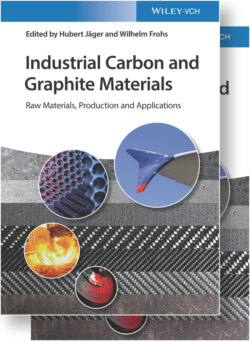Читать книгу Industrial Carbon and Graphite Materials - Группа авторов - Страница 309
6.1.3.4.1 Aggregate of Graphite Electrode for Aluminum Smelting
ОглавлениеAluminum metal is produced by reducing aluminum oxide (Al2O3) with carbon when electrolyzing the molten salt: 2Al2O3 + 3C → 2Al + 3CO2
In reduction of aluminum oxide, carbon is consumed according to the formula above. A source of carbon consumed is the anode used in the aluminum smelting furnace, and PC is used as a raw material (aggregate) of the anode.
The anode has two types, the prebake type that is calcined in advance and the Soederberg type that is calcined using waste heat in reduction, but both anodes use the aggregate (coke) and the binder pitch as a raw material. Demand in anode is increased with the growing aluminum industry, and approximately 10 000 000 t of the aggregate for an anode is used in 2009, and the majority of them use petroleum coke. A range of 100 000–200 000 t of PC is used.
Amorphous coke is also used in the process similar to the production of the synthetic graphite electrode described below, and the synthetic graphite block is also produced.
